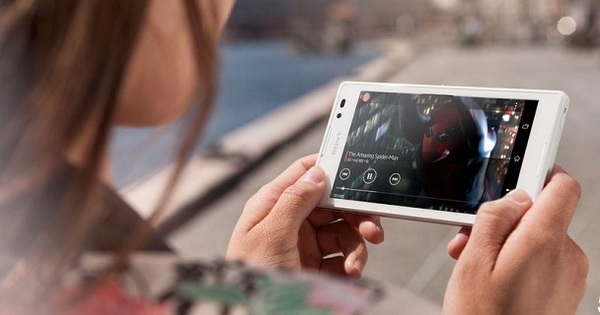Nothing is more annoying than endless waiting times on your smartphone or tablet. Usually an excess of unnecessary (system) applications and useless files are responsible for the delay. Fortunately, there is an easy way to do this by cleaning up all the unnecessary clutter from every device.
Tip 01: Clear Android apps
Android apps that you never use are best erased from your smartphone or tablet. A crowded user environment only slows down and the apps also require an unnecessary amount of disk space. On the Android device, navigate to Settings / Apps to open a list of installed applications. You can view additional details for each app by tapping its name. Choose Delete / OK to throw the app away. Sometimes it is not possible to uninstall an app, for example when the application is locked by the Device Administrators section. From the settings you first go to Security / Device Administrators, after which you remove the check mark behind the relevant app. Confirm with Deactivate / OK. You should now be able to delete the app in the normal way.
Did you know that you can also use CCleaner on your Android smartphone or tablet?Tip 02: CCleaner on Android
CCleaner is now a well-known name for the loyal Tips & Tricks reader, but did you know that this cleaning program is also available for Android? You install this app from Google Play. CCleaner shows exactly how much storage space is currently occupied. In addition, you can also view the current ram consumption of the device. If both values gradually reach the limit, then it is wise to brush up on Android. Tap on Analyze and see which data you can possibly delete. CCleaner suggests, among other things, to clear the cache, download folder, call logs, Google Maps data and sent WhatsApp videos. Check all the parts you want to throw away and confirm with Cleaning. You also use CCleaner to uninstall apps. To do this, open the menu at the top left (icon with three lines) and choose appmanagement. CCleaner distinguishes between apps from Google Play and system apps. Use the trash can icon to uninstall applications. Conveniently, you can check multiple apps at the same time, after which you confirm with Uninstall.

Tip 03: Clean Master

There are many more cleanup apps available in Google Play. Clean Master is a good example of this. This application discovers other unnecessary data residues than CCleaner and is therefore a good addition for your smartphone or tablet. Choose Start and superfluousfiles to perform a scan. Through grant / To allow give you permission to clean caches, ads and outdated apk files, among other things. After the scan, you will see which data Clean Master wants to erase, including data remnants from Facebook and Google Docs. At the part Powerfulto clean up do you choose Switch to remove even more unwanted files. For this you have to give the cleaning app more rights. Finally tap clutterto clean up to start the delete action. You can also free up RAM from the main menu, so that the device has more memory capacity for other tasks. In that case, choose successively Phone Optimization and boost. If you would like the battery of your Android device to last longer, tap in the main menu Battery saver. Clean Master maps the energy consumption of various apps. Through shut down close these apps to save power.
Tip 04: Manual cleaning
Of course, you can also manually clean Android, so you don't need any tools for this. That is a little more work. Navigate to Institutions / Storage and open the internal memory or SD card. You can see how much storage capacity apps, images, videos, audio files and other data are taking up. Tap an item to delete certain data, for example apps. The biggest space eaters are at the top. For example, you delete all data from Facebook, although you will then lose all account data. You can also clear the cache of various components.
root android
Although you have relatively much freedom within Android to adjust things, the possibilities are not endless. For example, you cannot delete certain system apps, because as a standard user you do not have the correct permissions. A good thing, because otherwise every user runs the risk of damaging the mobile operating system. After all, no one is waiting for a faulty Android version. On the other hand, smartphone and tablet manufacturers often provide all kinds of bloatware that you cannot remove in a regular way. The solution is to 'root' Android, where you no longer suffer from limited rights. This can be done in various ways and is only for advanced users due to a higher security risk. Also keep in mind that you will lose the warranty on the device. The operation also depends on the type of device you use, which often requires installing a specific apk file. For example, once you have root access to the Android device, use NoBloat to remove bloatware.
Tip 05: Clear iOS apps
You will quickly run out of capacity, especially on iPhones and iPads with only 16 or 32 GB of storage space. You can easily remove apps on any iOS device, so that you can free up disk space if necessary. It is nice that since iOS 10 you can also delete most standard apps. Well-known names such as Safari, Messages and Camera are still locked, but Home, FaceTime, Calculator, Calendar and Reminders, for example, are resolutely removed from the device. Tap an app and briefly press and hold the screen. Eventually the icons will wobble and crosses will appear on the screen. Tap the cross in the top right of an app and confirm with Delete to delete the application. In this way you delete multiple apps in succession. Do not expect miracles, because by removing all standard apps you free up about 150 MB of disk space. Do you regret later and want to bring back a default app? You simply download the relevant app from the App Store.

Tip 06: Space eaters
Would you like to know which apps are taking up the most disk space? On your iPhone or iPad, navigate to Settings / General / Manage Storage Space and choose the part Storage in front of Managementstorage. The biggest space eaters are at the top. WhatsApp and Facebook, among others, contain a lot of data. Unfortunately with Facebook it is not possible to delete data individually. You can of course decide to throw away the entire app and visit the social network with your browser from now on. In WhatsApp you simply indicate that you no longer want to download media files automatically.
Is your device running on iOS 10? Then you can also completely remove a number of default appsTip 07: Safari Data

During browsing sessions, Safari collects quite a bit of data, after which this mobile browser stores data locally. This includes browsing history and cookies. You manually delete this data from your iPhone or iPad. Go to Settings / Safari and swipe down a bit. Choose twice at the bottom Clear history and website data. If you use another browser on your iOS device, you can also clear its history and cookies.

